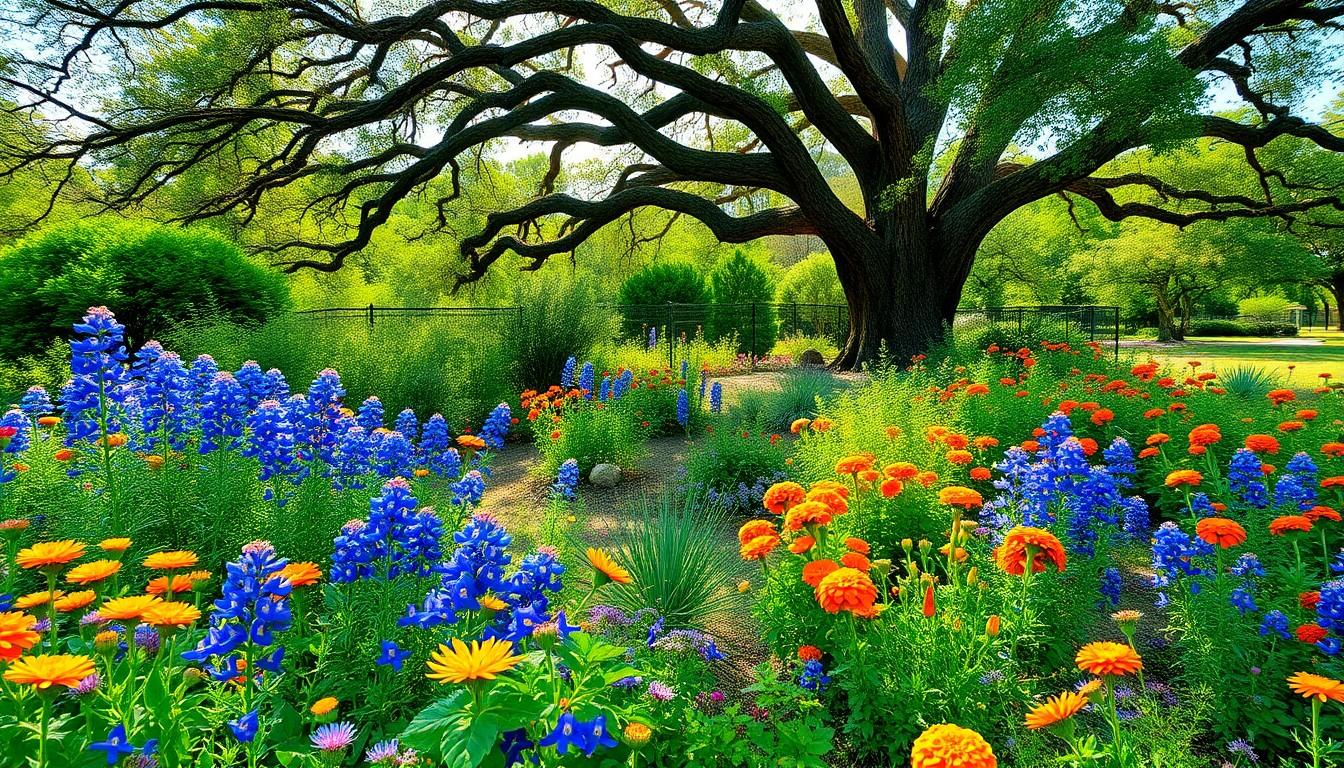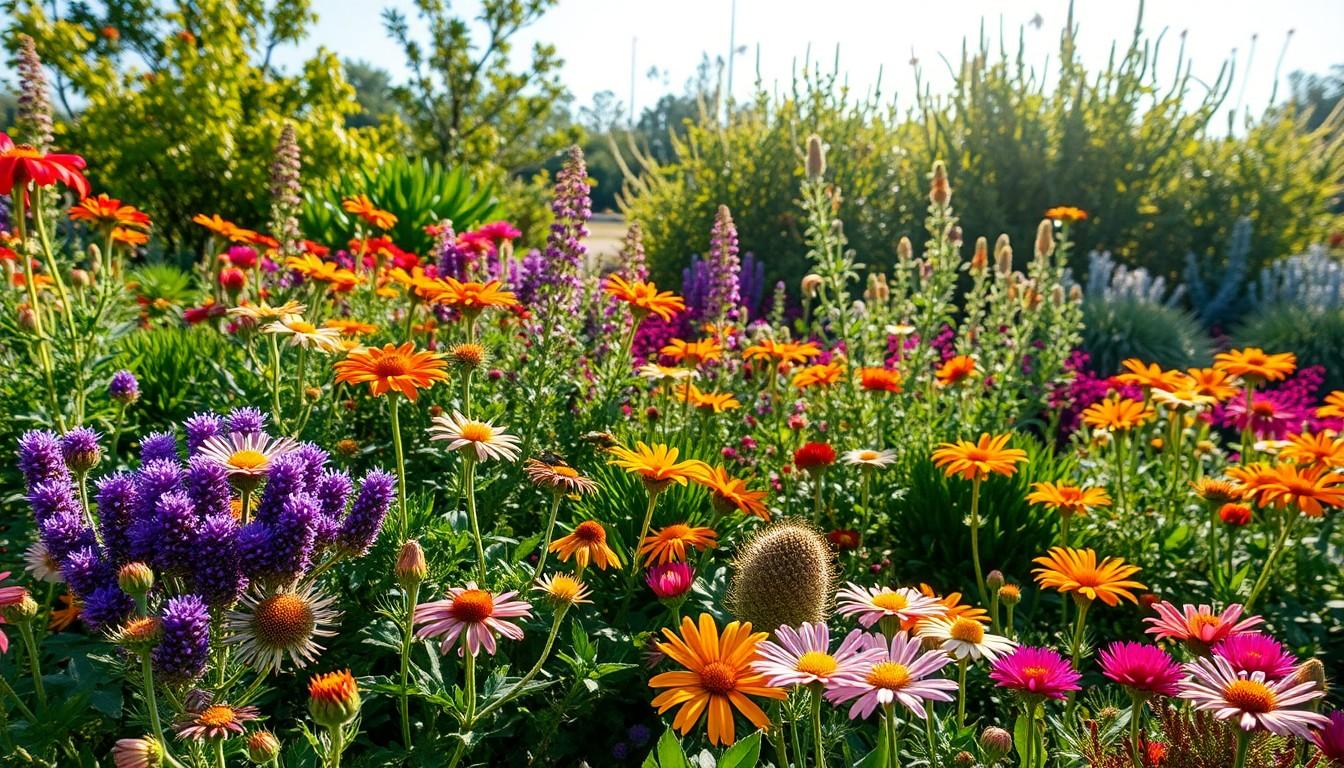Phone:
(701)814-6992
Physical address:
6296 Donnelly Plaza
Ratkeville, Bahamas.

San Antonio’s native plants are like the cool kids of the botanical world—stylish, low-maintenance, and perfectly adapted to the local climate. Forget about those high-maintenance exotics that wilt at the first sign of a Texas summer; these resilient beauties thrive in the heat and still manage to look fabulous.
Imagine transforming your yard into a vibrant oasis that not only saves water but also attracts butterflies and hummingbirds. With a little help from San Antonio’s native flora, you can create a landscape that’s both eco-friendly and stunning. Dive into the world of these local plants and discover how they can elevate your garden game while keeping your water bill in check. Who knew going green could be this much fun?
San Antonio’s native plants thrive in the region’s climate, adapting to heat and drought conditions. These species play a vital role in the local ecosystem, providing food and shelter for various wildlife. Pollinators, such as butterflies and hummingbirds, are often drawn to these plants, enhancing biodiversity in urban and suburban areas.
Diverse native plants include bluebonnets, Texas sage, and Mexican mint marigold. They exhibit vibrant colors and unique forms, enriching landscapes with their beauty. Homeowners often find these plants require minimal maintenance, leading to lower water usage compared to traditional garden plants.
Local gardeners appreciate the resilience of San Antonio native plants. Many species, such as palo verde and yucca, can tolerate harsh conditions with little intervention. These plants not only save resources but also contribute to sustainable gardening practices.
Selecting native plants supports regional conservation efforts. By choosing local species, homeowners reduce the impact of invasive plants on the ecosystem. This practice fosters a sense of connection to the local environment and promotes ecological balance.
Nurseries in San Antonio increasingly stock a variety of native plants. Garden centers often provide guidance on selecting appropriate species for specific landscapes. This resource ensures gardeners can make informed choices that align with their aesthetic preferences and environmental goals.
Incorporating native plants into landscapes creates visually appealing spaces that require less effort to maintain. This approach offers both beauty and functionality, yielding a lush garden with minimal ecological disturbance. Embracing San Antonio’s native flora allows residents to cultivate spaces that celebrate local heritage and promote ecological health.

Native plants play a crucial role in maintaining ecological balance and fostering biodiversity. Their adaptation to local conditions positions them as a cornerstone of sustainable gardening.
Native plants support local wildlife by providing essential food sources and habitats. Pollinators, such as bees and butterflies, thrive on native flowers, promoting healthy ecosystems. These plants are drought-resistant, requiring less water than non-native varieties, thereby assisting in water conservation. By planting natives, gardeners decrease reliance on chemical fertilizers and pesticides, contributing to a healthier environment. Native plant roots stabilize soil, reducing erosion and helping to filter pollutants.
Biodiversity flourishes with the inclusion of native plants in landscapes. Many native species attract a variety of birds, insects, and other wildlife, creating rich ecosystems. This diversity encourages natural pest control, as predators thrive alongside prey. In contrast to monoculture gardens, designs that feature natives cultivate a harmonious blend of species. Homeowners can enhance the resilience of their gardens against diseases and pests. Diverse plantings create a vibrant environment, providing visual appeal and supporting local ecosystems.
San Antonio offers a variety of native plants that thrive in its unique climate. These plants often enhance landscapes while supporting local ecosystems.
Many native trees flourish in San Antonio’s environment, such as the pecan and live oak. Pecan trees provide shade and produce tasty nuts, while live oaks offer sturdy canopies and attract wildlife. These trees require minimal water once established, making them suitable for dry conditions. Additionally, cedar elms thrive well in urban settings, providing a hearty habitat for birds. Overall, native trees play a vital role in maintaining ecological balance and enhancing property value.
Several native shrubs contribute to sustainable landscaping options, including Texas sage and esperanza. Texas sage is known for its silvery foliage and vibrant purple flowers, attracting pollinators. Esperanza boasts bright yellow blooms and offers drought resistance, adding beauty to gardens throughout the summer months. Native shrubs typically require less maintenance while showcasing striking colors and textures. Furthermore, they create natural habitats for birds and beneficial insects, promoting biodiversity.
Wildflowers bring vibrant colors and lively ecosystems to San Antonio gardens. Bluebonnets, the state flower, bloom in spring and attract numerous pollinators. Other species, like black-eyed Susans and Mexican mint marigolds, are low-maintenance and withstand local drought conditions. These wildflowers create picturesque landscapes while enriching soil health. Their deep roots aid in preventing soil erosion, contributing to overall ecological stability. Planting a mix of wildflowers fosters a dynamic habitat, supporting wildlife while enhancing aesthetic appeal.
Cultivating native plants in San Antonio allows for a beautiful, low-maintenance landscape that thrives in the local climate. Understanding soil requirements, watering needs, and pest management strategies enhances success.
Soil quality directly impacts the growth of native plants. Most native species prefer well-draining soil that allows for deep root systems. Amending clay soils with organic matter promotes aeration and improves drainage. Testing soil pH helps in determining nutrient availability; native plants generally perform well in slightly acidic to neutral conditions. Choosing plants suited for existing soil conditions reduces the need for extensive amendments, making for a sustainable gardening approach.
Watering practices affect the health of native plants significantly. Drought-resistant species often establish strong root systems that seek moisture deeper in the ground. During the first year, supplemental watering encourages strong growth. Once established, many natives require minimal watering, adapting to San Antonio’s natural rainfall patterns. Using mulch retains soil moisture and minimizes evaporation, contributing to a healthier ecosystem. Efficient irrigation practices, such as drip systems, support targeted watering to meet specific plant needs without excess waste.
Pest management for native plants typically emphasizes ecological balance. Native plant species attract beneficial insects, such as ladybugs and lacewings, which control harmful pests. Implementing practices like companion planting enhances this natural pest control. Monitoring plants regularly allows gardeners to spot any signs of infestation early. When pests do appear, using organic solutions, such as insecticidal soaps, addresses issues without harming beneficial populations. Prioritizing native plants in landscapes fosters a self-sustaining ecosystem that minimizes chemical interventions.
San Antonio offers various resources for those interested in incorporating native plants into their landscapes. Local nurseries stock a diverse range of native species. The San Antonio Botanical Garden serves as an excellent educational resource, offering workshops and classes focused on native plant gardening.
Online platforms provide valuable information too. Websites like the Native Plant Society of Texas contain extensive lists of native plants suited for specific conditions in the region, including soil and sunlight requirements. Additionally, the Texas AgriLife Extension Service offers advice on selecting and caring for these plants, helping gardeners make informed choices.
Community events often promote awareness of native plants. Annual native plant sales typically feature local experts who can guide visitors on plant selection and proper care techniques. Local garden clubs also provide opportunities for networking with other gardening enthusiasts, sharing experiences and advice.
Books focused on native landscaping provide deeper insights. Titles such as “Landscaping with Native Plants of Texas” offer practical tips and helpful illustrations, making them a good addition to any gardener’s library.
Finally, online forums can connect gardeners with experienced individuals. Websites like GardenWeb host discussions on specific native plants, allowing individuals to ask questions and share successes. Together, these resources create a comprehensive network for anyone looking to embrace native plants in their San Antonio gardens.
Embracing San Antonio’s native plants offers a sustainable and beautiful way to enhance local landscapes. These resilient species not only thrive in the region’s challenging climate but also provide essential support to local wildlife. By choosing native plants, homeowners contribute to ecological balance while enjoying low-maintenance gardens that require less water and care.
The increasing availability of native plants in local nurseries and community resources makes it easier than ever to incorporate these beneficial varieties into any garden. With their vibrant colors and unique forms, native plants create inviting spaces that connect residents to their environment. Ultimately, selecting these plants fosters a healthier ecosystem and encourages biodiversity, making a lasting impact on both the landscape and the community.